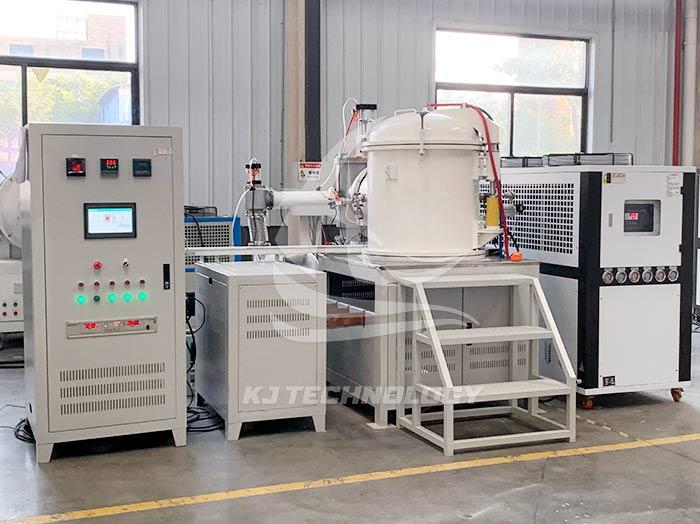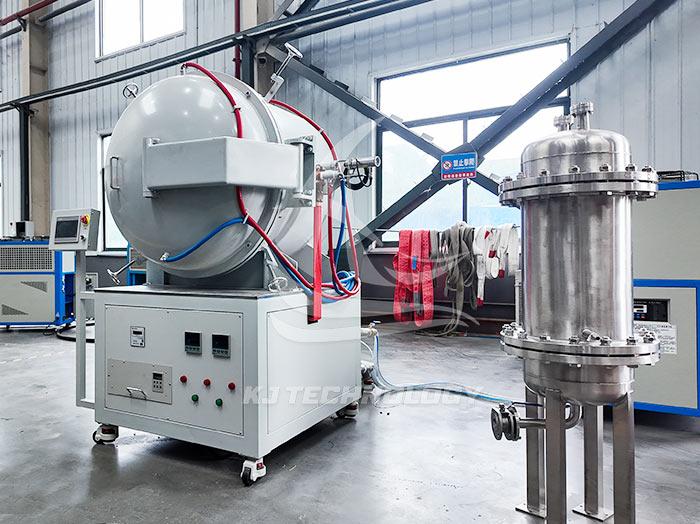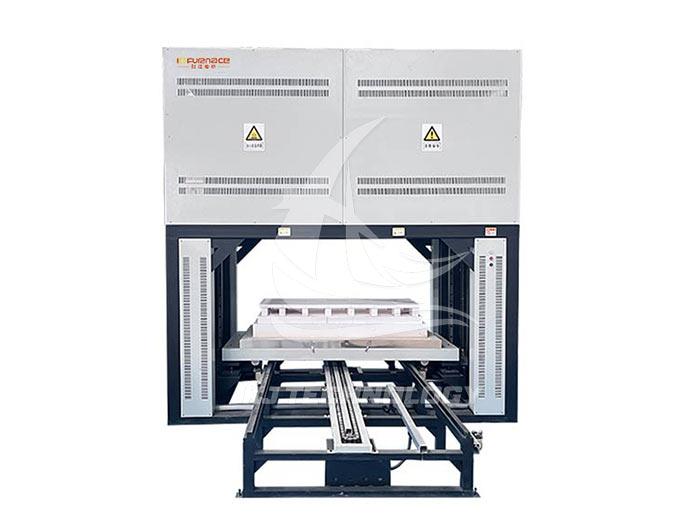Working principle of graphite vacuum furnace for laboratory use
 07-22-2025 Author: KJ technology
07-22-2025 Author: KJ technology
The laboratory graphite vacuum furnace achieves efficient heat treatment of graphite materials under non oxidizing or specific atmosphere conditions through the high-temperature stability, conductivity, and vacuum environment control of graphite materials. Its working principle can be analyzed from five aspects: core structure, heating mechanism, vacuum system, temperature control system, and operating mode.
1. Core structure: Construction of high-temperature environment dominated by graphite material
heating element
Using graphite plates, graphite rods or graphite felt as heating elements, utilizing the high melting point (about 3652 ℃) and heat resistance of graphite, it can withstand high temperatures exceeding 2000 ℃. For example, the heater of a horizontal vacuum graphite furnace consists of a circular circuit made of graphite plates, installed around the circumference of the insulation screen, and achieves temperature increase through current heating.
insulator system
Multiple layers of graphite felt or graphite hard felt form a thermal insulation screen to reduce heat loss. For example, a certain model of furnace body adopts a three-layer cylindrical insulation cover, with an outer layer of graphite felt and an inner layer of graphite hard felt, to ensure temperature uniformity in the heating zone of ± 5 ℃ (tested after insulation at 1000 ℃ for 1 hour).
Furnace structure
The furnace body and furnace cover adopt a double-layer water-cooled sandwich wall design, and the cooling water enters the furnace shell, furnace door and other parts through the main inlet pipe and branch inlet pipe to prevent high temperature damage to the airtightness. The furnace door is designed with a side opening, equipped with observation holes and compression devices for easy operation and sealing.
2. Heating mechanism: synergistic effect of graphite conductivity and vacuum environment
Conductivity of graphite
Graphite is composed of layered arrangement of carbon atoms, with excellent electron mobility and stable conductivity. When current passes through a graphite heating element, the resistance heating effect increases the temperature, while the anisotropic structure of graphite (current direction parallel to the layered structure) reduces resistance and heat loss, improving current transmission efficiency.
Optimization of Vacuum Environment
The vacuum degree can be as low as 5 × 10 ⁻⁶ mbar, effectively eliminating reactive gases such as oxygen and preventing material oxidation. For example, in the annealing process of semiconductor materials, a vacuum environment can prevent surface oxidation of silicon crystals and improve material purity. In addition, the oxidation resistance of graphite is enhanced under vacuum conditions, which prolongs the life of heating elements.
3. Vacuum system: multi-stage pump group achieves high vacuum degree
Pump configuration
Using a combination of mechanical pump and Roots pump, the mechanical pump pre pumps to a lower vacuum degree, and the Roots pump relay pumps to achieve a maximum vacuum degree of ≤ 50Pa (cold no-load). For example, a certain model of furnace is equipped with a 2X-8 rotary vane vacuum pump, with a pumping speed of 8 liters per second and a maximum vacuum degree of 6 × 10 ⁻ ² Pa.
Airtightness guarantee
The furnace body adopts airtight welding to reduce openings and dynamic sealing structures, thereby reducing the risk of leakage. Design sealed structures for components such as water-cooled electrodes and thermocouple export devices to ensure stable vacuum levels. For example, the furnace door is connected to the furnace body through a door hinge, equipped with a silicone sealing strip and a clamping device to ensure reliable sealing.
4. Temperature control system: high-precision temperature regulation and monitoring
Temperature measuring element
Using tungsten rhenium thermocouple or K-type thermocouple, the measurement range covers room temperature to 1650 ℃, and the temperature control accuracy is ≤± 1 ℃. For example, a certain model of furnace is equipped with tungsten rhenium thermocouples to measure the temperature inside the furnace and provide feedback to the temperature control system.
temperature control
Combining PID algorithm with thyristor rectification equipment to achieve precise temperature regulation. For example, the KGRS-750A/36V thyristor temperature control power supply controls the furnace temperature rise and fall rate (1-10 ℃/min) by adjusting the output current and voltage. The high-end model is equipped with a multi zone temperature control system to ensure temperature uniformity in the heating zone.
5. Operation mode: flexible switching between manual and automatic control
Manual Control
Suitable for simple processes or debugging stages, operators can adjust parameters such as heating power and inflation pressure through knobs. For example, manually controlling the inflation valve and exhaust valve to achieve the filling of protective atmospheres such as nitrogen and argon (maximum inflation pressure ≤ 0.03MPa).
automatic control
Based on PLC (such as Siemens S7-1200) and WINCC visualization system, it supports process parameter programming and process monitoring. For example, a certain model of furnace body adopts Kunlun Tong LCD touch screen+Mitsubishi PLC control, which can preset heating, insulation, and cooling curves, and record quality data to achieve unmanned operation.








